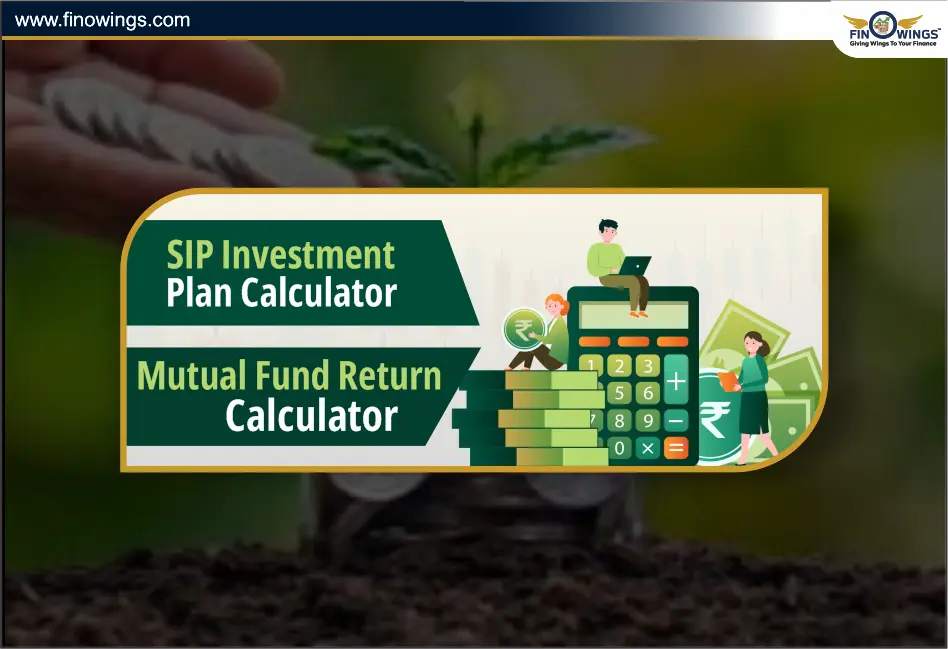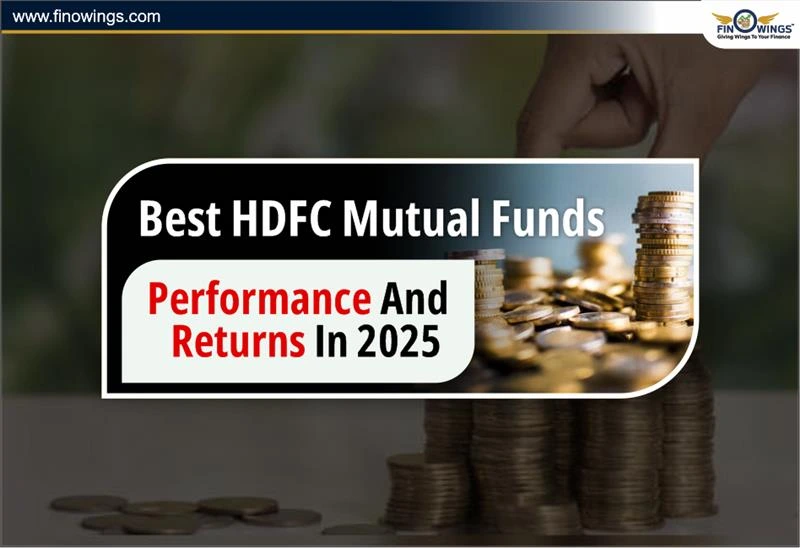Home >> Blog >> 10 Big Mutual Fund Mistakes to Avoid While Investing
10 Big Mutual Fund Mistakes to Avoid While Investing

Table of Contents
- Mistakes Investors Make While Investing in Mutual Funds
- 1. No Investment Objectives
- 2. Selecting the Wrong Fund Type
- 3. Making to Time the Market
- 4. Not Doing Enough Research
- 5. Stopping SIPs During Market Downturns
- 6. Not Reviewing Investments
- 7. Over Diversification
- 8. Ignoring Expense Ratio
- 9. Utilizing Equity Funds for Short Term Goals
- 10. Following the Crowd
- Conclusion
Mutual funds, which provide packaged investments in stocks, bonds, and other assets, are an excellent method to increase your money over time. Because mutual funds are managed by experts, both new and experienced investors can benefit from them. However, they can be quite easy and handy, and many investors make mistakes with their mutual funds that favor losses or negatively affect returns.
This blog is about the 10 biggest mutual fund mistakes that you make and explains how you can avoid them to make your investment journey successful.
Mistakes Investors Make While Investing in Mutual Funds
1. No Investment Objectives
What you need to define before investing in any mutual fund is-
-
What is my objective to invest?
-
What amount do I wish to have?
-
By what time do I want to fulfill my target?
Mistake: Many people just invest because somebody told them or they read an article in which it was mentioned that mutual funds give high returns. But without a goal, you might end up investing in the wrong fund.
Solution: Set some goals first before investing. Your goal could be saving for your child’s education, buying a house, planning a holiday, or retirement. Each goal has its own risk and fund choice.
2. Selecting the Wrong Fund Type
The following are types of mutual funds:
-
Equity Funds: Bluechip stocks. Has long-term goals.
-
Debt Funds: Buys fixed-income instruments. Matched to short-term goals.
-
Hybrid Funds: Equity and debt merged. Suited for mid-term goals.
Mistake: Investors are relying on friendships or more peer-based guidance instead of expert advice.
Solution: Check the funds’ terms and pick one with the appetite risk.
3. Making to Time the Market
Everyone is waiting on the market to buy for lower prices and sell at the peak. Even experts aren’t accurate at predicting market movements.
Mistake: Investors procrastinate investing until the “sweet spot” of time where they feel is the best time to invest, usually after the advance is made and there is some drop.
Solution: One common mistake is assuming that timing the market is feasible. To avoid doing so, strategize with SIP (Systematic Investment Plan). With SIPs, one is allowed to invest a predetermined amount at consistent intervals. This facilitates the purchasing of more units at lower prices, while fewer units are bought when costs are high.
4. Not Doing Enough Research
In the same manner that one evaluates numerous mobile phones before purchase, the same vigor should accompany searching for mutual funds.
Mistake: A frequently made mistake would be to assume high returns from a fund, paired with a recommendation from a friend would always yield positive results.
Solution: Utilising services and websites that focus on fund rating and details is prudent, as the suggested solution emphasises more than just analysing a fund's 3-5 year performance, consistency, and the fund manager’s experience.
5. Stopping SIPs During Market Downturns
It is typical for fears, such as a reduction in one's fund value during market falls, to set in.
Mistake: Panicking and discontinuing SIP payments is a common mistake among investors during market downturns. Such behavior prevents them from accumulating more units at less expensive prices.
Solution: From lower price markets, the stronger the investment will become once recovery occurs, the more units are available. Thus, continuously funding SIPs during market dips will yield the best results.
6. Not Reviewing Investments
Alterations in markets and personal goals result in life's unpredictabilities.
Mistake: Putting in the effort once, then forgetting about it.
Solution: Reassess your goals and financial standing, at minimum, on a semiannual basis to identify any changes. Evaluate whether the funds are performing adequately. Comprehend whether your objectives or financial circumstances have shifted. Modify as necessary, but refrain from excessive reaction to volatile movements in the short term.
7. Over Diversification
The idea that the more options one is given the better the overall outcome is not always true.
Mistake: Maintaining 10 to 15 mutual funds under the assumption that it will enable better diversification. In reality, more often than not, the majority of them have the same stocks and sectors.
Solution: Limit yourself to 3 to 5 high-quality mutual funds. Ensure that they belong to separate categories (equity, debt, hybrid) so that you receive proper diversification.
8. Ignoring Expense Ratio
Every mutual fund charges a small annual fee called the Expense Ratio that comes with managing your money.
Mistake: Ignoring this fee. Over time, a high expense ratio will severely diminish the return on investment.
Solution: Evaluate the expense ratios of comparable funds. Embrace direct plans instead of regular plans, provided you're confident in managing your investments due to their lower charges.
9. Utilizing Equity Funds for Short Term Goals
Long-term equity fund investors can expect to witness exceptional returns, but in the short term, they are extremely volatile.
Mistake: Investing in equities funds for immediate needs, such as a trip or a wedding the next year.
Solution: To meet short-term goals, prefer debt or liquid funds. Use equity funds only for long-term goals (5 years or more).
10. Following the Crowd
It is worth mentioning that everyone has individual finances, different goals, and risk capacity.
Mistake: Everyone is investing in that particular mutual fund.
Solution: Conduct personal analysis. Understand your finances and invest based on them.
Things to Keep in Mind While Investing in Mutual Funds in India
Some important points that you should consider while investing in mutual funds are-
-
Define your goals
-
Pick the most suitable fund
-
Stay consistent with SIPs
-
Don’t panic and alter your strategy significantly without strong reasoning.
Want to start your mutual fund investment journey but lack basic knowledge? We have a lot of mutual funds related common topics that would help in clearing your queries. Visit our page to learn how to invest in mutual funds.
Or do want to invest in top-performing funds in diverse sectors like Large cap, Mid cap, Small cap, Debt, Equity, Hybrid Funds, and others that can build wealth for you? Feel free to explore to buy best mutual fund for you.
Conclusion
Investing in mutual funds has the potential to help build wealth and achieve dreams if done wisely. Adhering to these ten big investment mistakes in mutual funds will help the investor become smarter while investing.
Investing is a journey that requires patience accompanied by consistently updated knowledge. The important part is to stay patient while remaining informed.
Other Related Blogs
- If you’re a beginner explore what are mutual funds.
- If you are ready to invest then explore the best mutual funds to invest in.
- Read if you want to invest in US Mutual Funds in India.
Disclaimer: Not a buy or sell recommendation. No investment or trading advice is given. This blog is only for information purposes. Always discuss with an eligible financial advisor before investing.
Frequently Asked Questions
A straightforward rule that is advised while investing in mutual funds is the 3-5-10 rule. It recommends investing for at least five years, maintaining an investment for ten years or longer, and having a minimum investment horizon of three years.
It entails investing for seven years, spreading investments across five asset classes, getting ready for three difficult stages, and raising SIP amounts every year.
In SIP the 15-15-15 rule recommends investing Rs.15,000 a month for 15 years in a mutual fund to achieve a 15% yearly return.



















